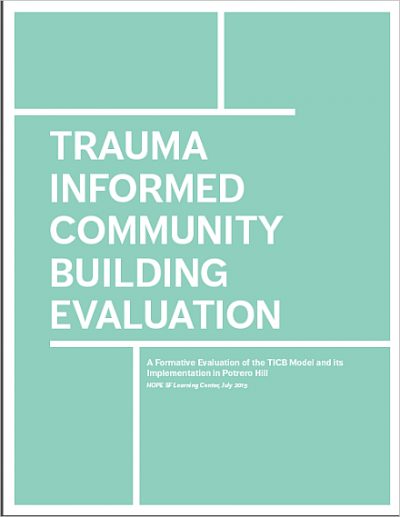Acknowledging Trauma
The TICB model is an alternative to traditional community-building models because the principles and strategies directly respond to the needs of residents traumatized by violence, generational poverty and racism.

For decades, traumatic experiences have been endemic in public housing communities such as the Potrero Terrace and Annex (PTA) in the Potrero Hill neighborhood of San Francisco, Calif. Such units were rife with community violence, concentrated poverty, structural racism, depravation and isolation. In 2011, San Francisco started HOPE SF, the nation’s first large-scale public housing revitalization project to tackle these monumental issues. A new community-building approach evolved as resident trauma and chronic stress made it tough to implement traditional redevelopment strategies. This new approach acknowledged chronic health and safety issues and became known as the Trauma Informed Community Building (TICB) model.
This evaluation examines the TICB model and its implementation in the PTA public housing community and informs efforts to implement the model in other communities. The report is synthesized in a TICB infographic.
What’s working? Promoting positive family interactions, decreasing resident isolation and fostering community relationships are all strategies of the TICB model that help combat the effects of stress and trauma. What’s missing? Promoting physical activity and health is being included as a result of this evaluation. This new core principle is well known to have positive impacts on stressed individuals, exactly what the TICB model is trying to achieve.